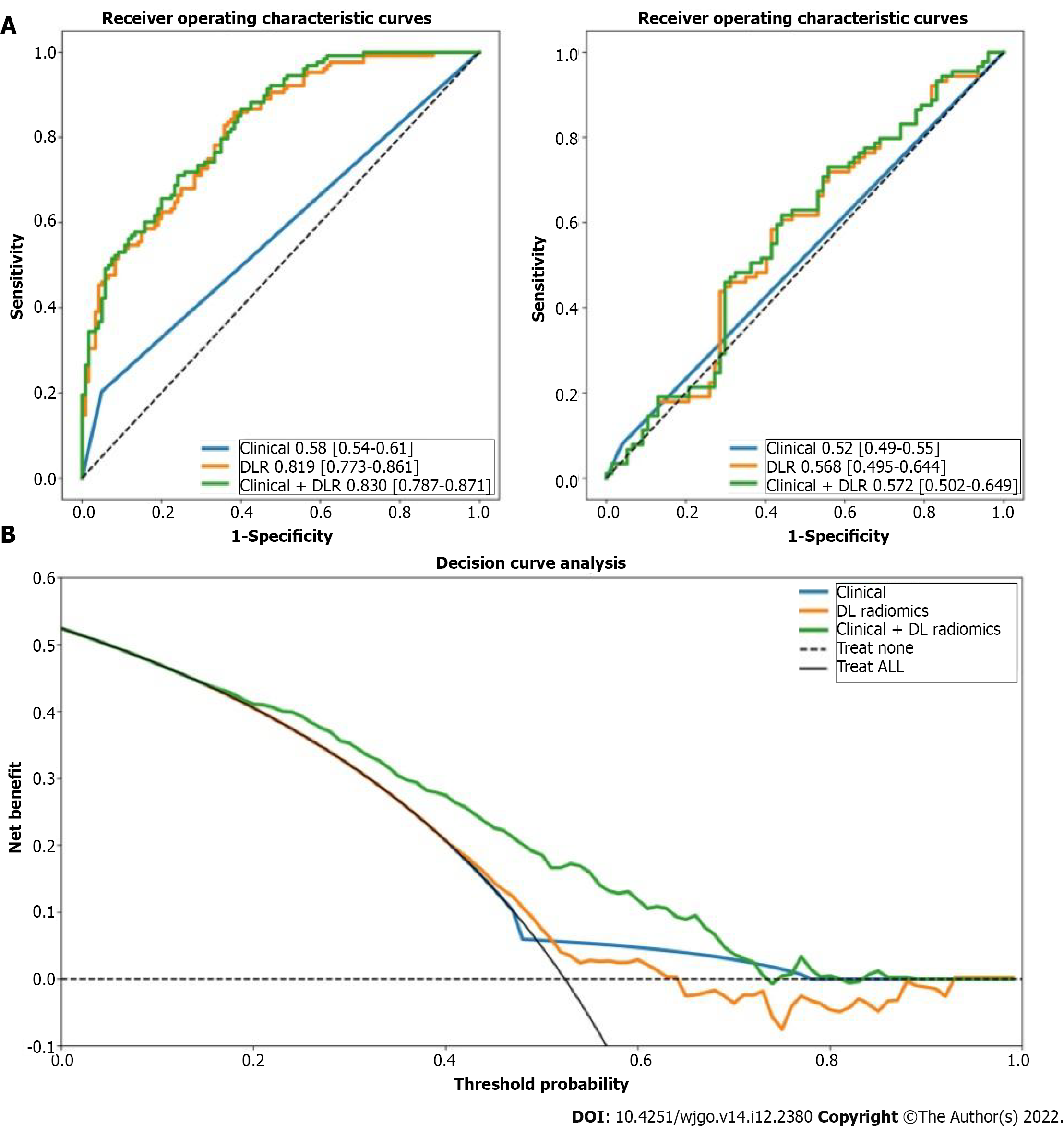Copyright
©The Author(s) 2022.
World J Gastrointest Oncol. Dec 15, 2022; 14(12): 2380-2392
Published online Dec 15, 2022. doi: 10.4251/wjgo.v14.i12.2380
Published online Dec 15, 2022. doi: 10.4251/wjgo.v14.i12.2380
Figure 1 Receiver operating characteristic curves and decision curve analysis.
A: Receiver operating characteristic curves of clinical, deep learning-based radiomics (DLR), and clinical + DLR models for predicting early recurrence in the training and testing cohorts; B: Decision curve analysis (DCA) of each model in predicting early recurrence. The vertical axis measures standardized net benefit. The horizontal axis shows the corresponding risk threshold. The DCA showed that if the threshold probability is between 0 and 1, using the DLR model derived in the present study to predict ER provided the same benefit as clinical model. ROC: Receiver operating characteristic; DCA: Decision curve analysis; DL: Deep learning; DLR: Deep learning-based radiomics.
- Citation: Huang Z, Shu Z, Zhu RH, Xin JY, Wu LL, Wang HZ, Chen J, Zhang ZW, Luo HC, Li KY. Deep learning-based radiomics based on contrast-enhanced ultrasound predicts early recurrence and survival outcome in hepatocellular carcinoma. World J Gastrointest Oncol 2022; 14(12): 2380-2392
- URL: https://www.wjgnet.com/1948-5204/full/v14/i12/2380.htm
- DOI: https://dx.doi.org/10.4251/wjgo.v14.i12.2380









